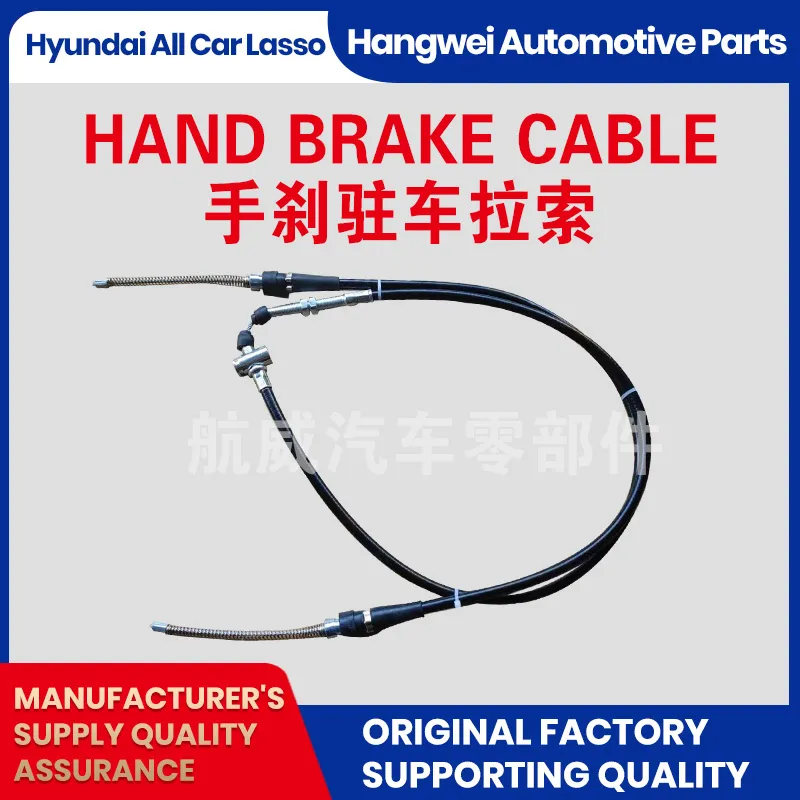auto gear cable
Understanding Auto Gear Cables Their Function and Importance in Vehicle Performance
Auto gear cables, often referred to as shift cables or gear shift cables, play a critical role in the functionality of a vehicle's transmission system. These cables connect the gear shifter in the vehicle's cabin to the transmission assembly, allowing the driver to change gears smoothly and efficiently. In a world where automobiles are an essential part of daily life, understanding the intricacies of auto gear cables can enhance both vehicle performance and safety.
The Anatomy of Auto Gear Cables
Gear cables are typically made from high-quality materials designed to withstand friction, heat, and wear over time. Each gear cable has an inner steel wire core, which is responsible for transferring the shifting motion from the gear shifter to the transmission. This core is encased in a protective outer sheath that prevents dirt, moisture, and debris from causing damage. Some cables also feature a lubrication system that reduces friction during operation, ensuring a smooth shifting experience.
There are two primary types of gear cables manual gear shift cables and automatic transmission cables. Manual gear shift cables are typically found in vehicles with a traditional manual transmission, while automatic transmission cables are utilized in cars with automatic gear systems. Each type has distinct characteristics that affect the vehicle's operation, making it essential to choose the correct cable for specific applications.
How Gear Cables Work
When a driver shifts gears, the action is transmitted through the gear shifter and into the cable. The inner steel wire moves within the sheath, pulling or pushing the mechanism within the transmission that engages the desired gear. This entire process occurs in milliseconds and is crucial to the vehicle's performance. If the gear cable becomes worn, frayed, or damaged, it can lead to a range of issues, including difficulty in shifting gears, slipping gears, or even complete transmission failure.
Signs of a Failing Gear Cable
Regular vehicle maintenance is key to identifying potential problems with gear cables before they escalate. Some common signs that a gear cable may be failing include
auto gear cable

1. Difficulty Shifting Gears If you notice a stiff or obstructed movement when attempting to shift gears, it may indicate that the cable is becoming worn or frayed.
2. Delayed Engagement A noticeable delay in the vehicle responding to gear changes can suggest an issue with the cable's connection or the transmission itself.
3. Unusual Noises If you hear grinding or clunking noises when shifting, it may be a sign of a problem within the gear cable mechanism.
4. Visible Damage Inspecting the cable for frays, breaks, or corrosion can help identify issues that need immediate attention.
Maintenance and Replacement
To ensure optimal performance, regular inspection and maintenance of gear cables are necessary. Factors such as weather conditions, driving habits, and overall vehicle maintenance can influence the lifespan of gear cables. If inspection reveals significant wear, it is crucial to replace the cables to avoid further damage to the transmission.
Replacement of gear cables typically involves removing the old cable and installing a new one, which can be performed by a qualified mechanic. However, for those with mechanical skills, this task can be manageable at home with the right tools.
Conclusion
Auto gear cables may seem like a small component of a vehicle, but their importance cannot be understated. They are essential for the safe and efficient operation of a vehicle's transmission system. Understanding their function, recognizing the signs of wear, and keeping up with regular maintenance can help ensure a smooth driving experience. Vehicle owners should remain vigilant about the health of their gear cables to maintain performance and avoid costly repairs down the road. By giving attention to this often-overlooked component, drivers can improve their overall vehicle experience and safety on the road.
-
Workings of Clutch Pipe and Hose SystemsNewsJun.04,2025
-
The Inner Workings of Hand Brake Cable SystemsNewsJun.04,2025
-
The Secrets of Throttle and Accelerator CablesNewsJun.04,2025
-
The Hidden Lifeline of Your Transmission Gear Shift CablesNewsJun.04,2025
-
Demystifying Gear Cables and Shift LinkagesNewsJun.04,2025
-
Decoding Clutch Line Systems A Comprehensive GuideNewsJun.04,2025
